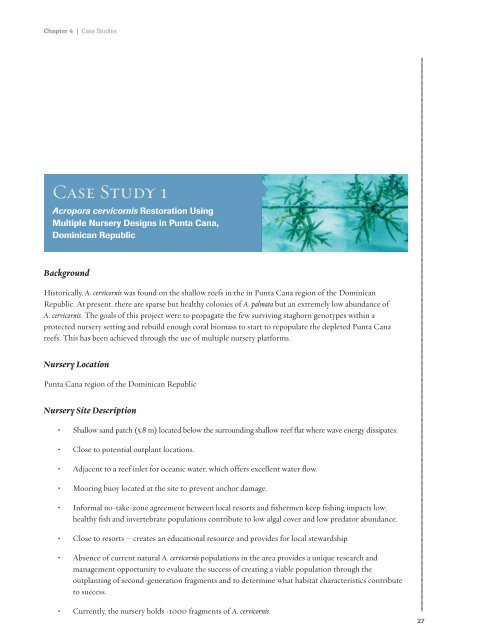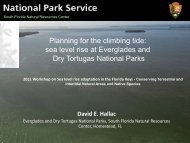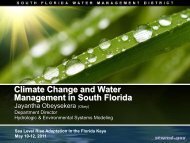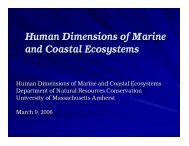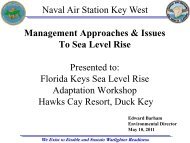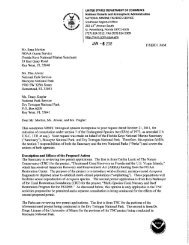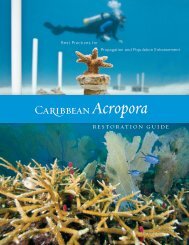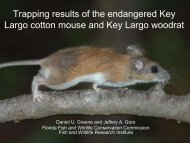Caribbean Acropora Restoration Guide - The Florida Reef ...
Caribbean Acropora Restoration Guide - The Florida Reef ...
Caribbean Acropora Restoration Guide - The Florida Reef ...
You also want an ePaper? Increase the reach of your titles
YUMPU automatically turns print PDFs into web optimized ePapers that Google loves.
Chapter 4 | Case Studies<br />
Case Study 1<br />
<strong>Acropora</strong> cervicornis <strong>Restoration</strong> Using<br />
Multiple Nursery Designs in Punta Cana,<br />
Dominican Republic<br />
Background<br />
Historically, A. cervicornis was found on the shallow reefs in the in Punta Cana region of the Dominican<br />
Republic. At present, there are sparse but healthy colonies of A. palmata but an extremely low abundance of<br />
A. cervicornis. <strong>The</strong> goals of this project were to propagate the few surviving staghorn genotypes within a<br />
protected nursery setting and rebuild enough coral biomass to start to repopulate the depleted Punta Cana<br />
reefs. This has been achieved through the use of multiple nursery platforms.<br />
Nursery Location<br />
Punta Cana region of the Dominican Republic<br />
Nursery Site Description<br />
• Shallow sand patch (5.8 m) located below the surrounding shallow reef flat where wave energy dissipates.<br />
• Close to potential outplant locations.<br />
• Adjacent to a reef inlet for oceanic water, which offers excellent water flow.<br />
• Mooring buoy located at the site to prevent anchor damage.<br />
• Informal no-take-zone agreement between local resorts and fishermen keep fishing impacts low;<br />
healthy fish and invertebrate populations contribute to low algal cover and low predator abundance.<br />
• Close to resorts – creates an educational resource and provides for local stewardship.<br />
• Absence of current natural A. cervicornis populations in the area provides a unique research and<br />
management opportunity to evaluate the success of creating a viable population through the<br />
outplanting of second-generation fragments and to determine what habitat characteristics contribute<br />
to success.<br />
• Currently, the nursery holds ›1000 fragments of A. cervicornis.<br />
27


